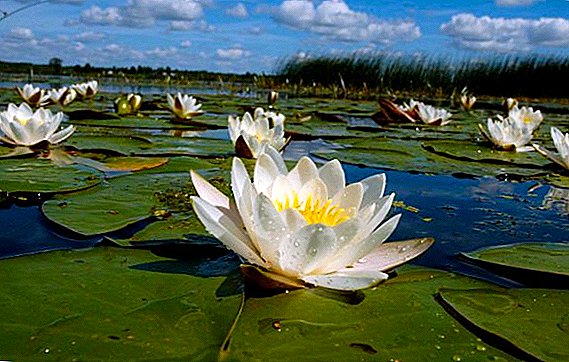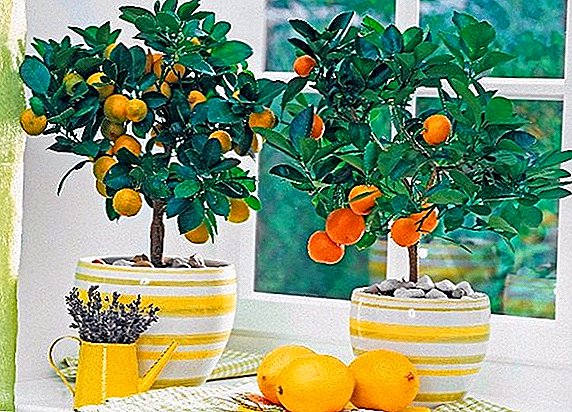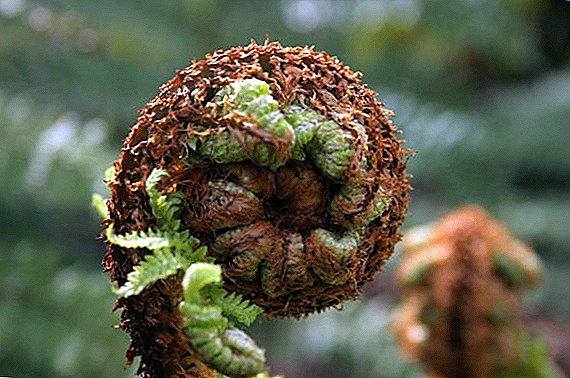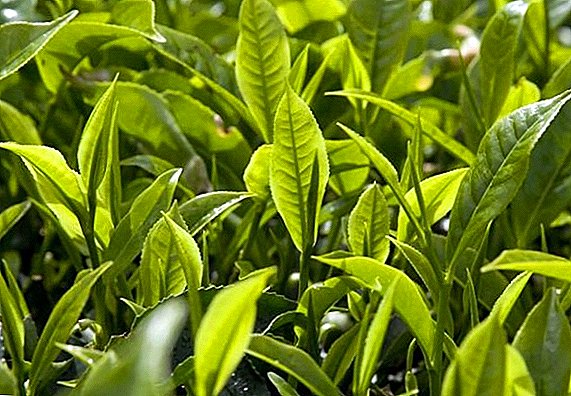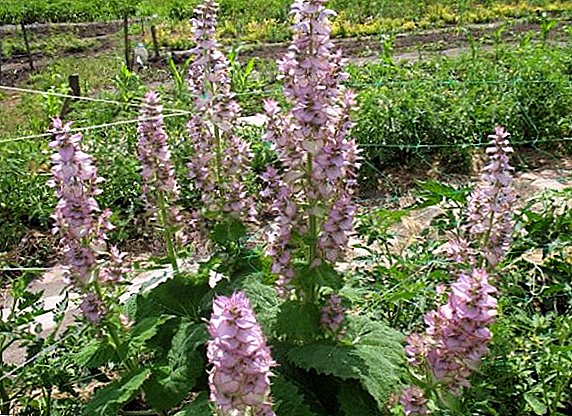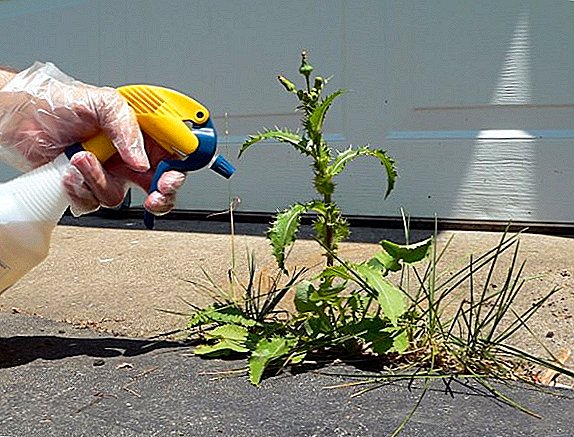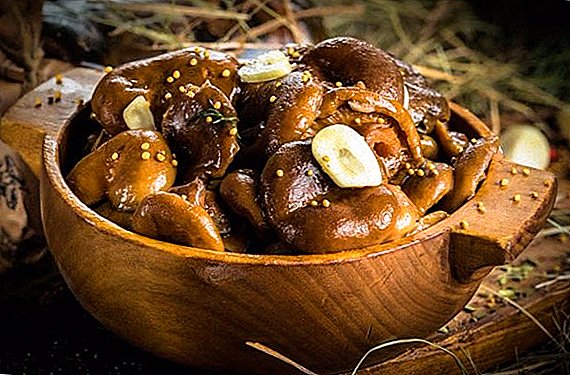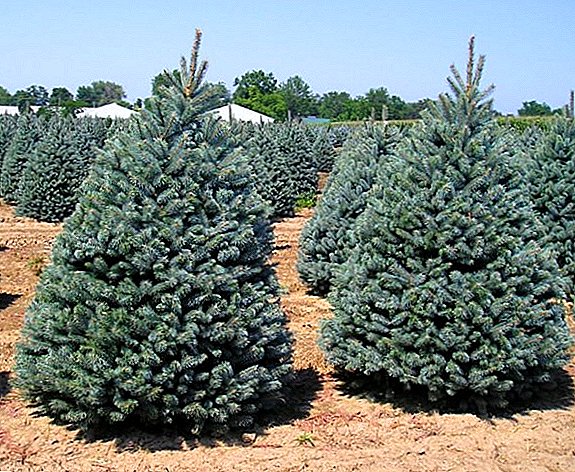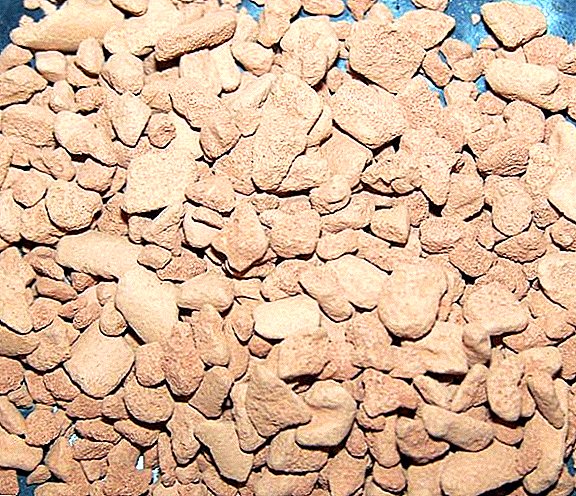 In flower shops you can find a large number of different types of soil for indoor plants. They differ in composition and application. Such diversity requires a clear understanding of why a particular species is used. Among all the substances, “Ceramis” stands out in particular. In this article we will help you to understand what it is, what it consists of and how to grow a plant in such a soil.
In flower shops you can find a large number of different types of soil for indoor plants. They differ in composition and application. Such diversity requires a clear understanding of why a particular species is used. Among all the substances, “Ceramis” stands out in particular. In this article we will help you to understand what it is, what it consists of and how to grow a plant in such a soil.
"Ceramis" - what is it
Any flower for good growth needs a balanced soil that will provide the plant with all the necessary nutrients. The real breakthrough in this area was made by the granulated soil "Ceramis" offered by the manufacturer from Germany. It is based on clay, which is mined in the western forests of Germany and processed in a special patented way.
You will be interested to get acquainted with the types of soil, the basic properties of the soil and the fertilizer system for them.
For 20 years, he won his place in the market of Western Europe. Now it is used for planting indoor plants that adorn office buildings and offices, hotels, fitness centers, as well as private houses. In the post-Soviet market, this ground appeared relatively recently, but has already managed to gain many fans.  Soil "Ceramis" consists of small granules. These granules absorb moisture when watering the plant. The mineral complex, which is included in their composition, dissolves in water and gradually enters the plant. Due to the fact that there is a small distance between the granules, they contribute to the easy development of the root system of any flower.
Soil "Ceramis" consists of small granules. These granules absorb moisture when watering the plant. The mineral complex, which is included in their composition, dissolves in water and gradually enters the plant. Due to the fact that there is a small distance between the granules, they contribute to the easy development of the root system of any flower.
The use of this type of soil allows for an optimal air-water balance of the root system, which protects it from rotting. In the process of using the substance does not settle and not compacted.
Agree that the quality and composition of the soil mainly affect the yield. Read how to improve soil fertility.
Soil composition
Before using "Ceramis" it is necessary to determine what it is made of and which plants are suitable. This soil substitute mainly consists of clay granules of various sizes enriched with NPK microelement set - nitrogen, phosphorus and potassium.  In the flower shop you can offer several types of soil, which, depending on the composition, can be used for ordinary houseplants and for orchids. In the second case, the composition includes pieces of pine bark (pine).
In the flower shop you can offer several types of soil, which, depending on the composition, can be used for ordinary houseplants and for orchids. In the second case, the composition includes pieces of pine bark (pine).
Did you know? The most common orchids are epiphytic or airy. They do not need land, since they inhabit other plants in nature, deriving nutrients from their wood, and water from the air. As a rule, they are bred at home. Therefore, in the composition of the soil "Ceramis" for orchids add pieces of bark.
Also "Ceramis" is used for the cultivation of palm trees, figs, bonsai, lemons and cacti. Moreover, it can be used as an aquarium primer, for breeding algae and other aquatic plants. 
All pros and cons
"Ceramis", like any other soil, has its advantages and disadvantages. He has a lot of advantages. These include:
- having once bought a substrate, it can be used for more than one year, even if the flower that you grew grew dead;
- does not need periodic replacement, as it happens with the ground;
- granulated soil allows you to grow flowers in beautiful decorative pots;
- during transplantation, you can fill the required amount, which allows economical use of it;
- "Ceramis" allows you to forget about the problems with poured window sills or dirt on them, as it does not require the use of pots with pallets;
- using this substitute of soil, it is not necessary to worry that you will fill in a flower with water;
- the use of granulated soil helps protect the plant from the occurrence of mold or harmful insects;
- a balanced composition contributes to the rapid growth of the flower, without the need to make additional fertilizers;
- if you want to transfer your flowers to it, land is allowed.

Important! If you decide to create a flower composition from different plants that require a different mode of irrigation, the granules "Ceramis" is ideal for your purposes, since each flower will take exactly as much moisture as it needs.
"Ceramis" is not only convenient to use, but also very useful for the plant. Small clay granules absorb water through numerous pores and hold it there. Plants have the ability to get food and moisture as needed. This feature allows you to reduce the number of irrigations to 1 time in two or even three weeks. It also gives you the opportunity to leave your pets for a long time unattended. Using a moisture indicator will allow you to water the flower in a timely manner.
The granulate has a stable structure and does not condense over time, so the roots feel always well-being - fresh air constantly flows to them, which contributes to a special growth and beautiful plant appearance ... Different granule sizes allow free development of even the smallest and weakest roots.  With "Ceramis" you can quickly and cleanly transplant flowers in any period of the year, while choosing any pot or pot.
With "Ceramis" you can quickly and cleanly transplant flowers in any period of the year, while choosing any pot or pot.
The disadvantages of many users include high cost. However, if we take into account the period of use and the cost of the purchase, such soil is much cheaper than its counterparts or the familiar land.
Important! If you lost or fell ill with a flower that grew in "Ceramis", do not rush to throw this priming. It is enough to rinse it thoroughly and dry it in the oven - and it is ready for reuse.
How to translate a plant to the ground
Let's look at the phased process of transplanting flowers that previously grew in the ground, in granular "Ceramis." But first you need to decide on the inventory that you need. 
Inventory for planting and transplanting
Before you begin, you need to prepare inventory. You will need:
- garden shears or scissors;
- a pot or flowerpots in which the flower is transplanted;
- ground "Ceramis";
- gloves;
- additional capacity in which we pour the soil, which will make the transplant process more convenient;
- garden spatula;
- moisture indicator.
We advise you to consider the importance of soil acidity for plants, how to determine the acidity of the soil and how to deoxidize the soil.

Stages
The process of transplanting an ordinary indoor flower consists of the following steps:
- Transplanting begins with filling the pot (pots) 1/3 with “Ceramis” primer.
- The flower is carefully removed from the pot, where it grew earlier. The main thing is to preserve the land in which it grows as much as possible, but at the same time shake off the excess soil.
- The process of transplantation using granular soil is no different from the usual transplant. The plant with its root system rolls over into a new pot, and “Ceramis” is poured on top. If we are talking about orchid transplantation, then if necessary, you can trim the roots.
- The plant with a lump of earth should be powdered with granules for 1-2 cm. This is necessary so that the lump of earth does not dry out and was covered with granular soil all the time.
- After transplantation, it is necessary to water the flower - the volume of water should be ¼ of the capacity of the pots. You can water in any way (either on the roots, or around the perimeter of the pot), while the moisture is evenly distributed throughout the volume. After watering, you need to make sure that the water does not wash out the granules and the roots are not exposed.
- For better growth, you should add fertilizer "Ceramis", which is made in the ratio of 1 cap to 1 liter of water.
- To control the moisture in the pot, you must use a moisture indicator. It is inserted directly into the root system. Initially, the color of the indicator has a red tint - this indicates that the flower needs urgent watering. After 2-3 hours, it will be saturated with moisture and change its color to blue. In the future, it is necessary to periodically check the readings of the indicator and water the plant in the presence of red.

Important! Soil "Ceramis" tamping is not necessary, as this can harm the root system of the plant.
An orchid transplant into a granulate has some peculiarities. Consider this process in stages:
- Careful movements of the orchid is removed from the old pot, then the remnants of the soil are removed. It is not necessary to completely remove the old soil - it is enough to do this so that you can effectively examine the root system of the plant.
- The roots are carefully examined, as often during transplantation it is revealed that they are affected by pests. To get rid of aphids or thrips, you need to put the plant in warm, filtered water. Additionally, you can treat the orchid with special preparations.
- At the end of pest control, dry or decayed roots are removed. This can be done using shears or scissors, which are pretreated with alcohol. The cut must be treated with a bactericidal agent or crushed activated charcoal.
- The plant is cleaned, dry leaves and barren flowers are removed. All sections are also treated with bactericidal preparations.
- Before planting, the root system must be dried for 8 hours.
- You should also prepare a pot for orchids. To do this, it is pre-disinfected, and drainage is placed on the bottom.
- After 8 hours you can gently place the flower in a new pot. All voids are filled with ground "Ceramis"; it is important to ensure that the aerial roots remain on the surface.

It is very important to properly prepare the ground before planting and disinfect the ground.
Features plant care
Caring for a plant that grows in "Ceramis" is not much different from growing in ordinary soil. However, watering the plant is necessary only when the moisture from it evaporates. In this regard, you can not do without a moisture indicator.
Orchids planted in the substrate "Ceramis", it is important to ensure proper care. After transplantation, it is placed on the east window or in the same place. However, the orchid must be protected from direct sunlight, and the temperature should be maintained between 20 ° C and 22 ° C. The first watering is carried out only after 4-5 days, using warm purified water. 
Did you know? The smell of orchids is very diverse - from exquisite aromas to the stench of rotten meat. However, while orchids, unlike many flowers, never cause allergies.
Whatever flower you grow in the soil "Ceramis", it still needs regular replenishment with minerals. Fertilizers can be applied with each irrigation, while it is best to use special tools from the Seramis series.
Familiarize yourself with the types of mineral fertilizers.
"Ceramis" is an excellent soil that allows you to grow any plant, without worrying that an overabundance of moisture will harm your pet. In addition, it favorably affects the growth of the flower. It is also important that the transfer to “Ceramis” is a fairly simple process, and not dusty and not dirty. These advantages justify the high price.


